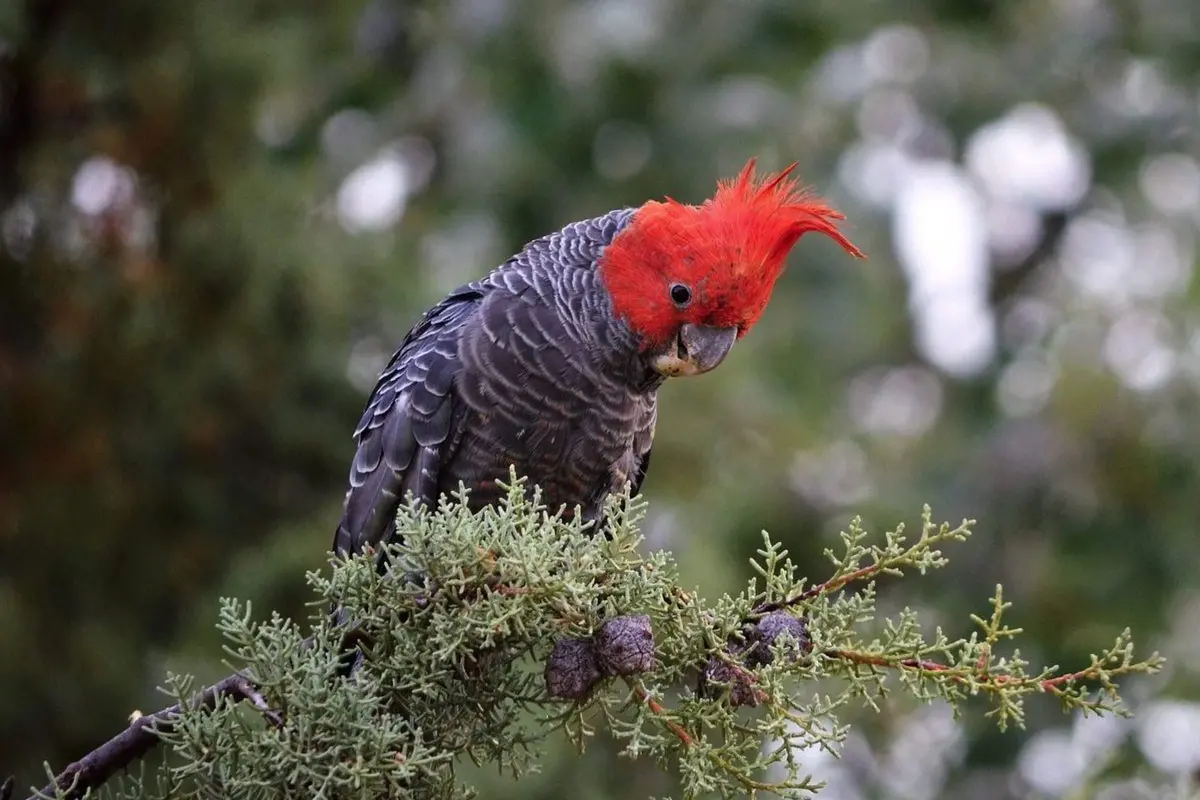PHOTO
A COMMUNITY group against the proposed 330MW Meadow Creek Solar Farm will object to the facility under the Environment Protection and Biodiversity Conservation Act.
Following a trip to Canberra on September 12, members of the Meadow Creek Agricultural and Action Group (MCAAG) have been given some hope in trying to stop the facility being approved following the State Government's fast-tracking of renewable energy facilities in Victoria.
The group's ace card are endangered species known to habitate the area, with the Gang-gang Cockatoo and the Eastern Bandy-bandy snake joining the Sloane's froglet on the list.
Other vulnerable species of bird are also known to the area, including the brown treecreeper, and diamond firetail, and there is also the grey-headed flying fox.
MCAAG representatives met with government departments about the Environment Protection and Biodiversity Conservation Act.
Indi MP Helen Haines organised the meeting so the representatives could access the Act and be given information about how to make a submission to it.
It is the only way the concerned residents can appeal the Meadow Creek solar facility application as the State Government has removed the Victorian Civil and Administrative Tribunal process in relation to renewable energy facilities applications.
Meadow Creek Group member and local farmer, David Minifie joined four other leading MCAAG members and he said the Gang-gang cockatoo passes through his property regularly.
"Five of us travelled to Canberra and we listened to the people at Bridget McKenzie's office, Indi MP Helen Haines coordinated a meeting with the EPBC team, and a staff member of Tania Plibersek attended," he said.
"The group and other concerned members of the public can make a submission to the EPBC until September 25 and the department will assess whether the application requires elevation to controlled action.
"This could include an environmental effects statement or environmental impact statement of the proposed facility on the endangered species."
Mr Minifie said the Sloane's froglet for instance likes to disperse in wet conditions that we've had where they can cross fertilise.
He said when a dry period arrives, they restrict back to slightly damper areas and for the population to maintain diversity they like to get out and jump around in the shallow water across the landscape.
"There is concern whether the frog will be able to handle the construction of the solar facility with all the mud and disturbance which would affect the water quality that the frogs usually thrive in," he said.
"We think the Gang-gang cockatoo mainly nests in the higher country but with some of the fires that have gone through the great divide in recent years, they may have had an effect on the hollow trees.
"Maybe they'll have to come down to low elevation to breed."
Mr Minifie said other vulnerable species of birds such as the brown tree creeper and diamond fire tail, and the grey-headed flying fox transverse huge areas looking for nectar and fruit trees.
"There are also species that depend on large, old remnant trees which have high value hollow-bearing trees for birdlife and arboreal mammals," he said.
These include possums and gliders, microbats and many reptiles such as goannas, pythons, dragons, geckos and skinks.
Mr Minifie said they are concerned about how many of these trees will be cleared.
It is unknown how many trees are marked for removal as the map does not specify how many trees there are in a cluster.
"Even when they're taking out younger trees, we're losing 50 years of recruitment, and you have to wait another 100-200 years for the trees to be suitable for certain nesting species," he said.
The group was handed the EPBC on Thursday and there are hundreds of pages to read through.
"Once we get the notice through the state planning system, there should be a statement in there regarding the number of trees to be removed," he said.
"We're going to start reviewing the documents on the EPBC portal and have our say on how we think the species will be impacted."
Meadow Creek Agricultural Community Action Group members John and Jess Conroy also accompanied Dr Haines in Canberra to seek more information on the environmental front.
Mr Conroy believes the public consultation period allowing 14 days to comment is highly restrictive.
"This is heavily weighted in the proponent's favour given that the final application will have had professionals preparing it for up to three years," he said.
"It makes it almost impossible to do a counter study against the so-called independent assessments.
"Local opinion and knowledge will have no weight to objecting to any part of the application that an objector believes is untrue or misleading."
Mr Conroy said the community is greatly concerned their right to appeal any decision has been eroded after the tribunal process was removed by the State Government.
"The number of solar panels have increased to 592,752 up from 475,000, and the lithium-ion battery capacity has increased from 250MW to 1GWh," he said.
The Victorian Government did not respond to a request for information about the planning process timeline by the time of publication.

